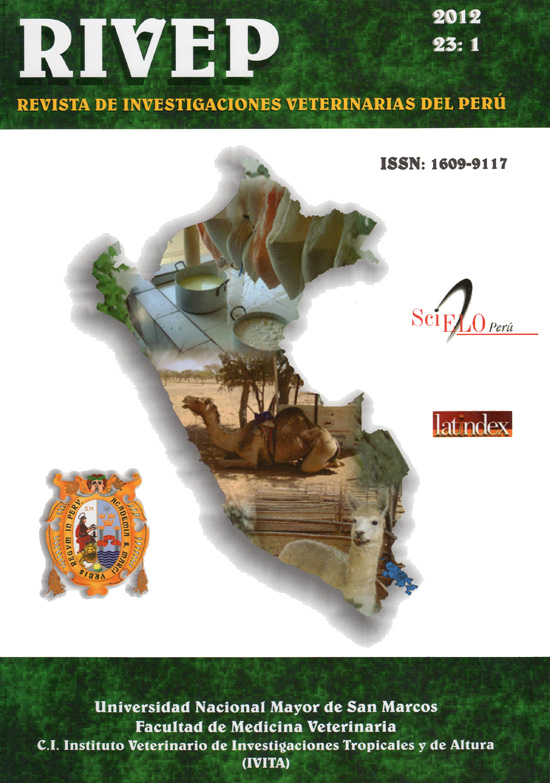Effect of chemical castration on the productive and behavioural performance of the guinea pig
DOI:
https://doi.org/10.15381/rivep.v23i1.881Keywords:
chemical castration, guinea pigs, iodine tincture, performance, behaviorAbstract
The objective of the study was to determine the effect of chemical castration using iodine tincture on the productive and behavioral performance of the guinea pig. Twenty four crossbred Peru-Inti guinea pigs from 25 to 35 days of age were used and allocated in two groups: castrated and non-castrated. Iodine tincture at 2%, dose of 0.1 ml per testicle, was used for the castration at the second week of the study. Weekly body weight and at slaughter, daily body weight gain, and number of fights were evaluated using a completely randomized design with covariance for initial body weight. Weekly body weight was higher in castrated animals from the fourth week of the study (706.5 vs 648.8 g) onwards (p<0.05). Body weight at slaughter (837.9 vs 738.40 g) and daily body weight gain (9.06 vs 6.94 g) were higher in the castrated (p<0.01). The number of fights (7.8 vs14.4) was lower in castrated animals (p<0.01). The chemical castration increases body weight at slaughtering and reduce the aggressive behavior of guinea pigs improving the presentation of the carcasses.Downloads
Downloads
Published
Issue
Section
License
Copyright (c) 2012 Jaime Vega V., Hilario Pujada A., Karina Astocuri C.

This work is licensed under a Creative Commons Attribution-NonCommercial-ShareAlike 4.0 International License.
AUTHORS RETAIN THEIR RIGHTS:
a. Authors retain their trade mark rights and patent, and also on any process or procedure described in the article.
b. Authors retain their right to share, copy, distribute, perform and publicly communicate their article (eg, to place their article in an institutional repository or publish it in a book), with an acknowledgment of its initial publication in the Revista de Investigaciones Veterinarias del Perú (RIVEP).
c. Authors retain theirs right to make a subsequent publication of their work, to use the article or any part thereof (eg a compilation of his papers, lecture notes, thesis, or a book), always indicating the source of publication (the originator of the work, journal, volume, number and date).



